On June 9-11, 2017, the 17th National Conference of Radioactive Seed Brachytherapy was held at Guangzhou Baiyun International Convention Center.

The opening of 17th National Conference of Radioactive Seed Brachytherapy
This conference was organized by Prof. Zhang Fujun, one of pioneer Chinese Oncologist specializes in Minimally Invasive Therapy, the Chairman-elect of the Oncology Department of Minimally Invasive Therapy Committee and Chinese Anti-Cancer Association. He’s also the leading cancer expert in St. Stamford Modern Cancer Hospital Guangzhou.
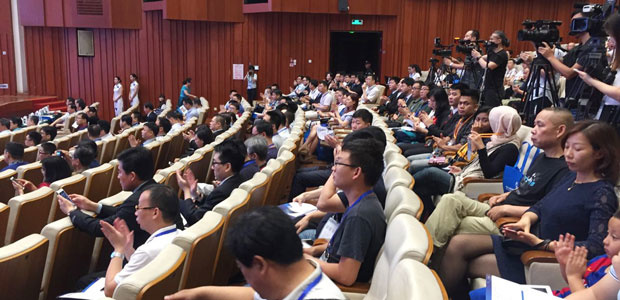
On the scene
The conference was also co-organized by Seed implantation Committee of Minimally Invasive Interventional Therapy of Oncology Department, Chinese Anti-Cancer Association, Committee of Minimally Invasive Interventional Therapy of Oncology Department of Guangdong Anti-Cancer Association and St. Stamford Modern Cancer Hospital Guangzhou. St. Stamford Modern Cancer Hospital Guangzhou, as China's only Sino-foreign joint venture cancer hospital, was the only designated co-organized hospital.
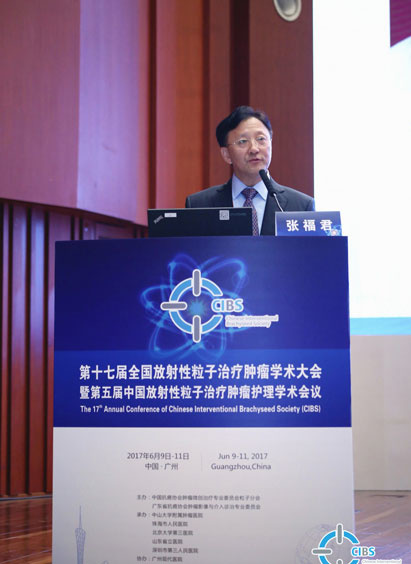
Prof. Zhang Fujun
In the conference, Dr. Bai Haishan and Zhang Weizhong were awarded as Distinguished Paper the third prize winner by the article, Clinical Research on Applying 125I Seeds Implantation to Painful Bone Metastases after Failed Chemotherapy and Radiotherapy. This honor is also a convincing evidence for significant achievement St. Stamford Modern Cancer Hospital Guangzhou has yielded in minimally invasive treatment for cancer, with innovation meeting an international advanced standard.
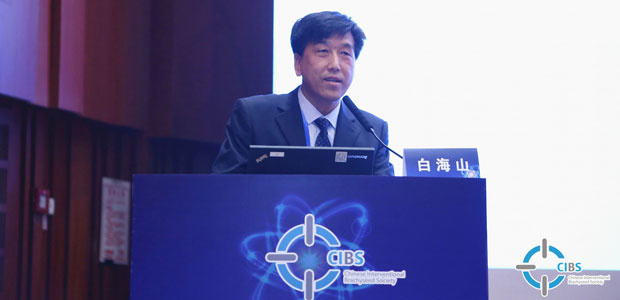
Dr. Bai Haishan
In addition, Dr. Bai Haishan also delivered a speech on Clinical Application of Combining Radioactive Seeds with Nanoknife for Cancer Treatment. The subject is audacious renovation based on the rapid development of cancer treatment technologies and it will certainly benefit more cancer patients in the era of increasingly emerging advanced cancer therapies in medical field.

Dr. Bai Haishan (in the middle), Distinguished Paper the third prize winner
The Conference Assembled Outstanding International Cancer Specialists
There were more than 800 international outstanding minimally invasive cancer experts coming from different countries such as China, U.S., Japan and others. Among them, Anuja Jhingran from MD Anderson Cancer Center and specialists from National Medical Center, Tokyo, such as Shrio Saito, Ken Nakamura, Mari Ohmi, Naoko Kikuno, Takashi Fukagai, Dr. Wang Junjie, the Director of the Department of Radiation Oncology of the Peking University Third Hospital, and the Deputy Director of Radiation Oncology of Peking University Medical Department joined the conference. Additionally, Dr. Wu Peihong, Chairman of the Committee of Minimally Invasive Therapy of Oncology Department, Chairman of the Chinese Anti-Cancer Association, Director of Sun Yat-Sen University Cancer Hospital Medical Imaging and Intervention Center also joined the conference.
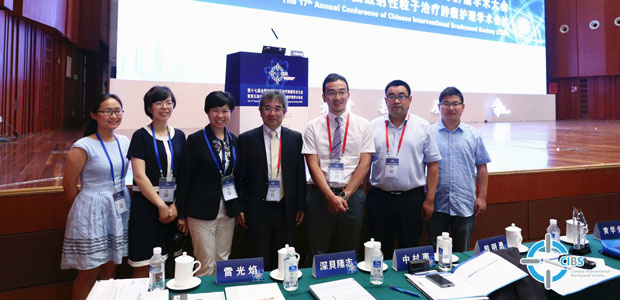
Specialists from National Medical Center, Tokyo
The main goal of the conference was to share the “Dose, Technology and Quality" of radioactive seed implantation and help absorb and put the new concept, technology and standard of brachytherapy into practice in clinical work as well as explore and discuss the current medical issues and new concept of 125I seeds Implantation.
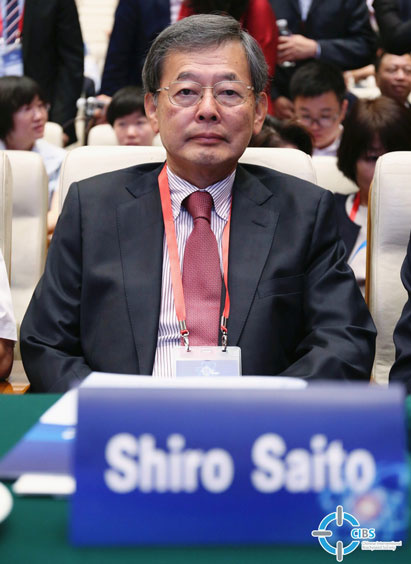
Shrio Saito, from National Medical Center, Tokyo
It was worth mentioning that this meeting proposed “ a complete standardized training program for particles," to strengthen and regulate the 3D printing template in the clinical application of particle therapy, which would lay a solid foundation for China’s radioactive seed brachytherapy to enter the mainstream ranks of the world.
Cancer Specialists Sees a Bright Future for Cancer Patients
Prof. Zhang Fujun stated, “At current state, Iodine Seed Implantation has proven to be an effective treatment for middle and advanced stages of prostate cancer, cervical cancer, and cases with multiple metastases to lungs and liver.”

Anuja Jhingran from MD Anderson Cancer Center
This year, Iodine Seed Implantation has made a breakthrough in its clinical application of 3D printing technology while formerly Iodine Seed Implantation was conducted simply based on the personal experience. Nowadays 3D printing template technology, with three-dimensional position and accurately calculated dose of particles, can effectively avoid the blood vessels, nerves and bones, thereby enhancing the accuracy of location and operation, shortening the operation time and reducing the pain. The mode of radioactive seed implantation changes from "simply based on experience" into "computer-assisted precision guidance", which makes the extensive application of this technology possible and greatly improved.
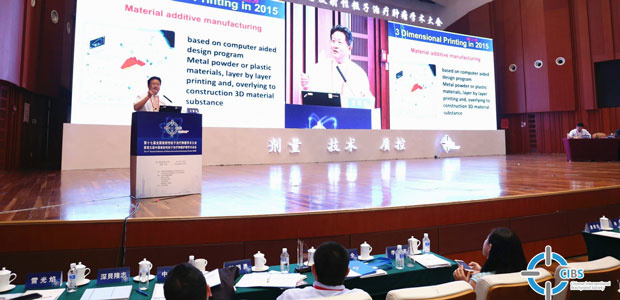
Dr. Wang Junjie, the Director of the Department of Radiation Oncology of the Peking University Third Hospital
The Operation is Safe and Effective
Currently, there are therapies in surgical department and internal medicine such as radiofrequency ablation and Nanoknife, which cause damage to tumor. Prof. Zhang and Bai Haishan, Director of Minimal Invasive Technology Department in St. Stamford Modern Cancer Hospital Guangzhou, explained the reason for introducing seed implantation was that cancer treatments adopted in domestic hospitals brought about incomplete ablation. If one patient gets multiple tumors in the lung, the operation conducting fully ablation for every single tumor is financially and physically unbearable for the patient.
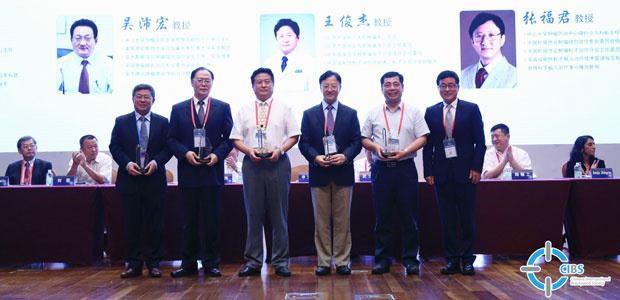
Prof. Zhang Fujun (the fourth on the left) won Prize for Outstanding Contribution in Cancer Treatment
In the application of personalized 3D printed template-assisted seed Implantation, prior to the operation, a comprehensive medical treatment plan will be planned in advance, followed by accurate and precise calculations on the required dosage of seed implants as well as the precise location of the implant needles , thus to perform the tumor necrosis effectively.
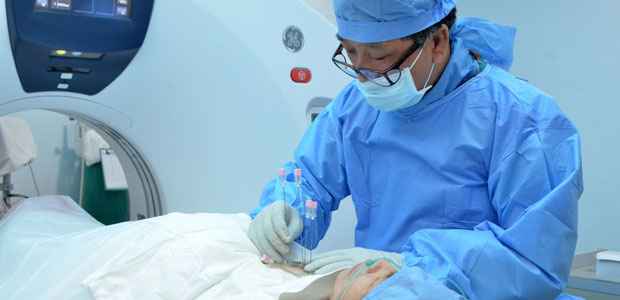
Dr. Bai Haishan is conducting 3D printing template assisted seed implantation
According to Dr. Bai Haishan, who performed more than 2,000 minimally invasive operations said, “Seed Implantation was initially used to treat prostate cancer; but later research shows that it can also be used to treat other types of cancer. Therefore, seed implantation is applicable to treat solid tumors except those organs with cavities.”
The conference witnessed significant achievement, which stood for application of seed implantation in cancer treatment has gained recognition in worldwide and also represented a milestone for progress that St. Stamford Modern Cancer Hospital Guangzhou has made in minimally invasive cancer treatment.
*Surgery, in addition to the appropriate chemotherapy and radiotherapy, are effective in treating early cancer, but certain patients in late stage of cancer may not be tolerate surgery well as they can be relatively weak. A combination of carefully planned minimally invasive therapy, chemotherapy or radiotherapy can effectively reduce the side effects and discomfort of treatment and may help patient get better efficacy.








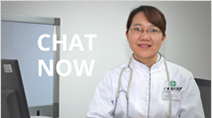




 viber
viber